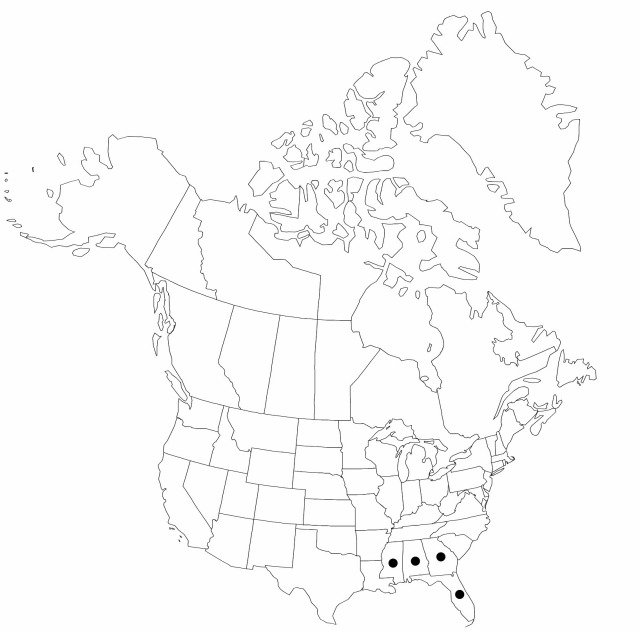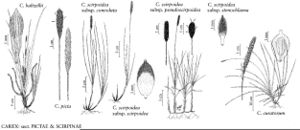Difference between revisions of "Carex baltzellii"
Amer. J. Sci. Arts, ser. 2, 3: 355. 1847.
FNA>Volume Importer |
FNA>Volume Importer |
||
| Line 47: | Line 47: | ||
|publication year=1847 | |publication year=1847 | ||
|special status= | |special status= | ||
| − | |source xml=https://jpend@bitbucket.org/aafc-mbb/fna-data-curation.git/src/ | + | |source xml=https://jpend@bitbucket.org/aafc-mbb/fna-data-curation.git/src/8f726806613d60c220dc4493de13607dd3150896/coarse_grained_fna_xml/V23/V23_1040.xml |
|genus=Carex | |genus=Carex | ||
|section=Carex sect. Pictae | |section=Carex sect. Pictae | ||
Revision as of 16:04, 18 September 2019
Culms 15–40 cm. Proximal leaf blades 20–80 cm × 4–8 mm, smooth, glaucous and finely papillose abaxially, green and scabrid adaxially. Inflorescences with staminate and pistillate flowers on same plant; spikes 3–8; lateral spikes pistillate, often with a few staminate flowers at apex, 1–5 basal, 1–2 distal spikes, 15–45 × 4–6 mm; terminal spikes staminate, usually with a few pistillate flowers at base, 10–40 × 2.5–4 mm. Pistillate scales obovate, 4–5.5 × 2–3.5 mm, rounded or emarginate, apex mucronate to awned. Staminate scales oblanceolate to obovate, 4–6 × 1.9–2.6 mm, apex obtuse and mucronate. Perigynia 4–5 × 1–1.5 mm, yellow-green, apex rounded; beak brown, 0.3–0.5 mm.
Phenology: Fruiting spring.
Habitat: Forests
Elevation: 0–100 m
Distribution

Ala., Fla., Ga., Miss.
Discussion
Of conservation concern.
Selected References
None.
